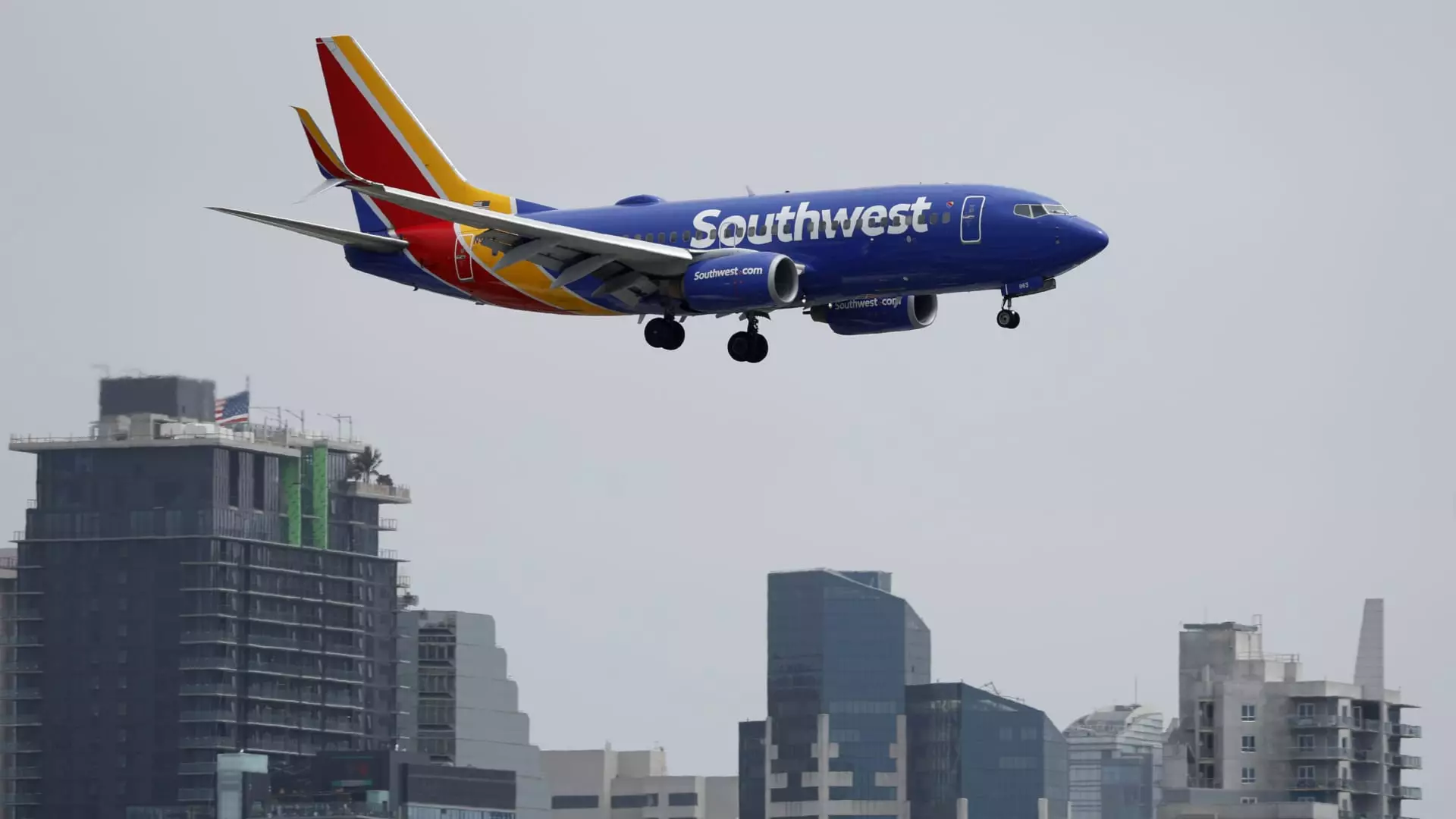In a rapidly changing airline industry, Southwest Airlines finds itself at a crossroads. Responding to mounting pressure from activist investor Elliott Investment Management, the carrier has indicated that it may have to undertake significant restructuring and make “difficult decisions” as it aims to restore profitability. This call for change follows a summer where the airline unveiled a series of wide-ranging adjustments to its operations, grounded in a necessity to modernize its aging business model that has served it for over five decades.
Recent announcements revealed that Southwest is set to abandon its long-standing open seating policy in favor of a more traditional assigned seating arrangement. This move illustrates a strategic pivot intended to optimize revenue streams, aligning with market expectations for comfort and convenience—traits increasingly sought after by traveling consumers. Additionally, the airline plans to introduce premium seating options featuring additional legroom, enhance its flight schedule with overnight services, and elevate its online visibility by listing flights on platforms such as Google Flights and Kayak. These initiatives signify an aggressive step towards capturing a younger demographic, as conveyed by Southwest’s Chief Operating Officer, Andrew Watterson.
While the operational changes are crucial, Southwest’s announcement of upcoming adjustments to its route network signals a profound acknowledgment of the competitive landscape it operates in. Watterson mentioned in a staff message the need to refine the network to facilitate a return to profitability, emphasizing that these adjustments—while potentially unsettling for employees—are necessary for the carrier’s financial health. Importantly, Watterson reassured staff that immediate lay-offs or station closures are not anticipated; rather, the adjustments could manifest in relocating personnel to more strategically advantageous locations.
The strategic ethos at Southwest now appears focused on cost reduction and targeted profitability, in line with broader trends in the airline sector. Airlines such as JetBlue have already taken decisive actions to reallocate resources by cutting routes that do not contribute to profitable operations. This reflect a growing trend among carriers leaning into more financially sustainable practices, as demands for fiscal responsibility resonate across industries.
Central to Southwest’s current struggles is the pressure exerted by Elliott Investment Management, advocating for executive management changes to enhance the airline’s financial performance. This shareholder activism has fostered an environment where leadership accountability is paramount, with executives increasingly aware that they are under scrutiny to deliver tangible improvements in the company’s fiscal results. The recent decision of executive chairman and former CEO Gary Kelly to step down next year accentuates the transformative wave sweeping through the organization.
As Southwest prepares for its forthcoming investor day, scheduled to take place at its Dallas headquarters, stakeholders are keenly awaiting further revelations about the strategic initiatives and route modifications the airline will embrace. The trajectory of Southwest Airlines will be dictated by its ability to adapt to these heightened expectations while navigating the challenging waters of the commercial aviation landscape. The resolution of internal and external pressures may ultimately define the carrier’s rebound and future success.


Leave a Reply